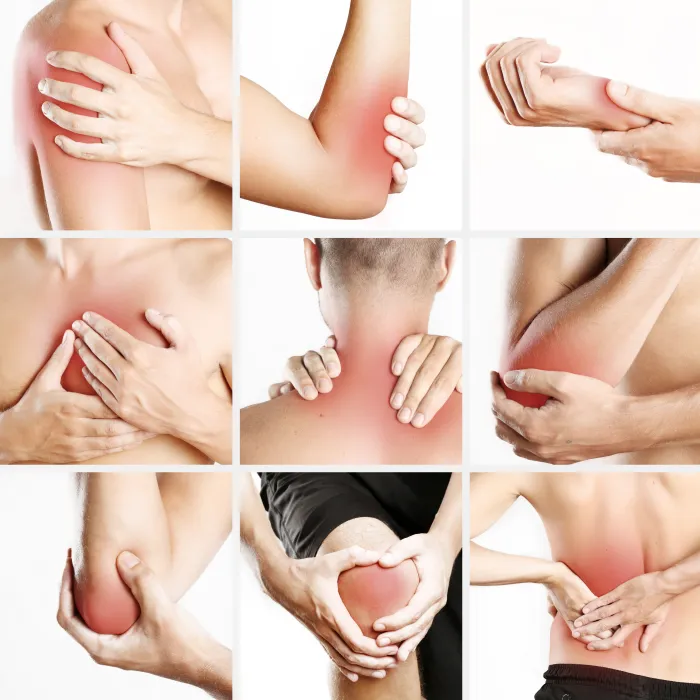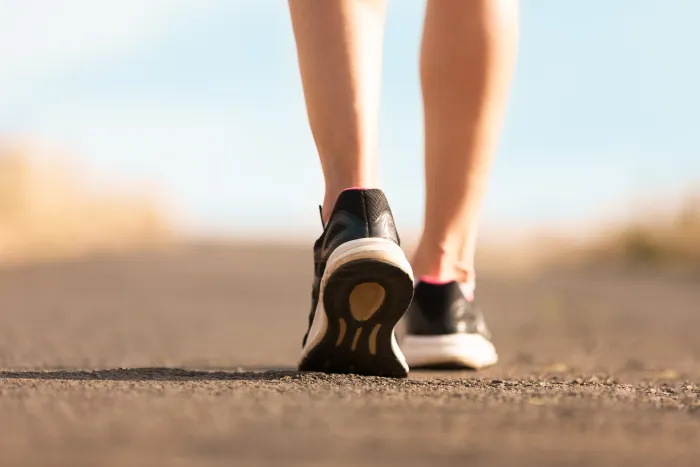Osteoarthritis
Degenerative Joint Disease
What You Need to Know About Osteoarthritis
Osteoarthritis, also known as degenerative joint disease, is the most common type of arthritis and affects more than 32.5 million US adults, according to the CDC. It typically causes pain in the hip, hands, knees, and back. If you've been suffering from this condition, the doctors at Resurgens Orthopaedics are experts on treating osteoarthritis with a variety of non-surgical and surgical options. Schedule an appointment today to see how we can help you get moving again!

What Is Osteoarthritis?
Osteoarthritis is a chronic joint condition and the most common type of arthritis. It occurs when the cartilage covering the ends of bones breaks down at the joints, leading to inflammation, deterioration of tendons and ligaments, and pain, stiffness, swelling, and deformity of the joint. Osteoarthritis is usually an age-related condition that develops slowly over many years, but it can also occur in younger people who are obese, overuse their joints, or suffer athletic injuries or other traumatic injuries.
Different Types of Osteoarthritis
The two main types of osteoarthritis are called primary and secondary osteoarthritis. While primary osteoarthritis doesn't have a specific cause, it is related to age, genes, and gender. Primary osteoarthritis is typically seen in adults over the age of 50, and it affects women more than men.
Secondary arthritis can be directly tied to a specific cause. Typically, these causes involve some trauma to a joint, such as an infection, dislocation, or tear. People who participate in high-impact sports or physically demanding labor are more likely to suffer from secondary osteoarthritis.
There are many kinds of primary and secondary osteoarthritis, affecting many areas of the body. These include:
Knee Arthritis
Knee osteoarthritis is a condition in which the cartilage protecting the ends of the bones in the knee joint gradually breaks down, causing friction between the bones, which results in pain, stiffness, and swelling. The knees are particularly susceptible to this condition because they help bear the weight of the body, and osteoarthritis of the knee can have a severe impact on a person's mobility and quality of life. Although it is most common in people aged 50 or older, younger individuals can also suffer from arthritic knees.
Hand Osteoarthritis
Osteoarthritis of the hand is a degenerative condition that affects the small joints of the fingers and the base of the thumb, also known as basal joint arthritis. Symptoms of arthritic hands include joint swelling, stiffness and pain. Hand osteoarthritis can also lead to joint enlargement and the formation of bony lumps in the finger joints over time, which may interfere with normal hand function. This condition most commonly affects the wrist, the joint at the base of the thumb, and the middle and top joints of the fingers as the cartilage in those areas is worn down.
Hip Osteoarthritis
Hip osteoarthritis is a common condition that is typically caused by wear and tear related to aging, as the hip joint bears the weight of the body. Traumatic hip injuries can also cause this condition, which may severely impact a person's lifestyle, causing pain and inflammation that worsens over time due to the breakdown of cartilage. Osteoarthritis of the hip may develop faster in some people due to the irregular shape of their bones forming the hip joint, such as hip impingement, where the ball and socket parts of the hip joint don't perfectly fit together, leading to friction that eventually causes hip osteoarthritis. This can also happen in people with hip dysplasia, where the hip socket is too shallow to support the ball of the femur, causing abnormal stress on the cartilage and premature hip degeneration.
Shoulder Osteoarthritis
Osteoarthritis of the shoulder occurs when the cartilage that covers the shoulder joint deteriorates due to aging, repetitive motion, or direct injury. This deterioration causes the humerus to rub directly against the bone of the shoulder socket, resulting in small bone spurs that create pain in the shoulder joint. While less common than osteoarthritis of the knee or hip, the Arthritis Foundation reports that nearly one-third of people over the age of 60 suffer from some level of arthritic shoulder pain.
The shoulder is made up of two joints, the glenohumeral joint and the acromioclavicular (AC) joint, with the AC joint being more prone to shoulder osteoarthritis. The AC joint is where the collarbone meets the acromion, which is the tip of the shoulder blade. The glenohumeral joint is where the top of the arm bone meets the shoulder blade, allowing for a wide range of motion in the shoulder.
Osteoarthritis of the Back and Spine
Osteoarthritis of the back and spine occurs when joint and disc cartilage in the neck and lower back breaks down. This cartilage pads the ends of the bones in the facet joints, which are small joints located between and behind the vertebrae. The deterioration of this cartilage can cause the development of spurs that put pressure on nerves exiting the spinal column, leading to weakness and pain in the arms or legs. Spine osteoarthritis can occur anywhere along the spine, but it usually affects the lower back or the neck.
What Causes Osteoarthritis?
The causes of osteoarthritis are generally similar no matter which area of the body is affected. Some common causes of degenerative joint disease include:
- Age: People over the age of 50 face an increased risk of developing osteoarthritis.
- Genetics: If osteoarthritis runs in your family, then you are also more likely to develop it.
- Gender: Women face a higher risk of osteoarthritis than men.
- Injury: Trauma to the bones, cartilage, or ligaments in or around your joints can lead to secondary osteoarthritis.
- Repetitive Motions or Joint Overuse: Certain jobs or sports require participants to use the same joints repeatedly, which can accelerate the onset of osteoarthritis.
- Obesity: Being overweight places a greater strain on your joints and makes your cartilage wear down faster.
- Musculoskeletal Issues: Conditions like hip dysplasia or knocked knees can accelerate the development of osteoarthritis.
- Muscular Strength: Without proper support from your muscles, joints may become poorly aligned. This misalignment can lead to degenerative joint disease.
Osteoarthritis Symptoms
Some symptoms of osteoarthritis, such as pain, are common in all forms of osteoarthritis, while other symptoms may be limited to specific joints. Examples of common symptoms of osteoarthritis include:
- Pain: Initially, your pain may be a dull, infrequent ache, but it will likely worsen over time as your osteoarthritis progresses. It may get worse during rainy weather and can even interfere with your sleep. Physical activity may aggravate your condition, and it's typical to experience pain when you first wake up.
- Stiffness and Reduced Range of Motion: As arthritis progresses, the affected joint(s) will feel more stiff and may lose their full range of motion. For example, you may not be able to bend your hips and knees as well as you're used to, or you may not be able to completely open and close your fingers.
- Crepitus: Sometimes called "joint locking" or "joint sticking," crepitus is associated with the feeling that a joint is stuck in place. It's common to hear and feel grinding or clicking sensations when you move a joint affected by crepitus.
- Swelling: Osteoarthritis causes irritation and damage to the cartilage surrounding a joint, and your body may respond by increasing the swelling, redness, and tenderness of tissues in the affected area.
- Bone Spurs: Also called osteophytes, bone spurs are extra pieces of bone that can form around arthritic joints. They are most commonly seen as bony lumps around the finger joints but can occur in the spine and other areas of the body.
- Joint Instability: This symptom is most common in load-bearing joints like the knee. It's characterized by a wobbly feeling in the affected joint, like it could give out.
How Is Osteoarthritis Diagnosed?
While there is no single test for osteoarthritis, your doctor can perform the following diagnostic activities to confirm your condition:
- Review and discuss your medical records, family history, symptoms, current medications, and other relevant factors.
- Conduct a physical exam of the affected joint.
- Order diagnostic imaging tests. X-rays can indicate bone damage, bone spurs, and loss of joint space. Magnetic resonance imaging (MRI) scans can indicate damage to soft tissues surrounding the joint.
- Order blood tests to rule out other conditions (there is no blood test to detect osteoarthritis).
- Perform a joint aspiration, where a needle is inserted into the problematic joint to extract fluid. Testing this fluid can help your doctor determine if another condition is causing your pain, such as an infection or gout .
Osteoarthritis Treatment
Resurgens Orthopaedics provides a variety of non-surgical and surgical treatments for osteoarthritis. We'll work closely with you to evaluate your condition and determine the best path forward.
Non-Surgical Treatment
We always try to take the least invasive and disruptive course of action, and treatment will often start with non-surgical measures. Those might include:
Medications: There are several different types medications that can help treat degenerative joint disease, including:
Analgesics: This class of pain relievers includes over the counter (OTC) options like Acetaminophen (Tylenol) and prescription opioids.
Nonsteroidal anti-inflammatory drugs (NSAIDs): These drugs are commonly used to reduce inflammation and pain. OTC options like aspirin and ibuprofen
can help address pain, but you may need a prescription for stronger NSAIDs that can help with inflammation.
Counterirritants: These OTC medications use ingredients like capsaicin, lidocaine, or menthol to take the focus away from your pain by making the affected
area feel cool, warm, or itchy.
Corticosteroids: This prescription drug treats inflammation and can be taken by mouth or injected into a problematic joint by your doctor. A similar process
for treating knee osteoarthritis is to inject hyaluronic acid, a naturally occuring lubricant that is typically present in joints, into the knee.
Cortisone shots: These injections can help reduce pain for weeks or months at a time, but your doctor can only provide a limited amount of these shots. That's
because excessive use can cause side effects like infection or ligament damage.
Other medications: Several drugs not originally intended to treat
osteoarthritis have since been approved by the FDA for this use case. These include the antidepressant duloxetine (Cymbalta) and the anti-
seizure medication pregabalin (Lyrica).

Other Non-Surgical Treatments for Osteoarthritis
Weight Loss: Losing weight reduces the stress on your joints and slows the progression of degenerative joint disease.
Alternative Therapies: Some patients experience success with treatment like acupuncture or by using supplements like glucosamine or chondroitin.
Using a Brace: Braces can help alleviate the strain being placed on the affected joint, especially for knee osteoarthritis. "Unloader" braces take weight and pressure away from the side of the knee while "support" braces are used to support the entire knee.
Physical and Occupational Therapy: There are several types of physical therapy that may be useful for patients suffering from osteoarthritis. A general physical therapist can help you build strength and increase flexibility through guided exercises and recommendations, while an occupational therapist can teach patients how to perform everyday functions at work and home with less pain. These therapies can become even more specialized depending on the affected region. For example, a hand therapist can teach a patient with hand osteoarthritis exercises for their specific condition and ways to reduce the strain placed on the hands.
Surgical Treatment
When non-surgical remedies aren't achieving the desired results, your doctor may recommend a surgical intervention. While this is not an exhaustive list of surgical options, some examples of common surgeries to treat osteoarthritis include:
Hip Resurfacing: This procedure involves removing the damaged bone and cartilage from your hip and replacing them with a metal shell. The "ball" joint will remain, but it is capped with this metal shell.
Total Hip Replacement (Arthroplasty): In this procedure, the damaged hip socket and the head of the femur are both replaced with artificial parts made from metal, plastic, or ceramic
Osteotomy: This surgery involves cutting or shaving down bones to facilitate better alignment with the affected joint.
Joint Fusion: For patients with osteoarthritis of the hand, joint fusion may be a good option. Fusing your bones together can decrease your pain, but it will also limit your range of motion.
Total Shoulder Arthroplasty: This procedure involves completely replacing the shoulder joint with an artificial joint. It can be particularly effective for patients with arthritis of the glenohumeral joint.
Hemiarthroplasty: This procedure is also effective for patients with arthritis of the glenohumeral joint and involves replacing the head of the humerus bone.
Resection Arthroplasty: In this procedure, the end of the collarbone is removed. This surgery is effective for those with arthritis of the AC joint or rotator cuff problems.
You Can Trust Resurgens Orthopaedics With Your Osteoarthritis Treatment
At Resurgens Orthopaedics, we understand how frustrating it can be to have your lifestyle impacted by osteoarthritis. We're committed to getting you moving again with expert care and an array of non-surgical and surgical treatment options. Schedule an appointment today to get started!
